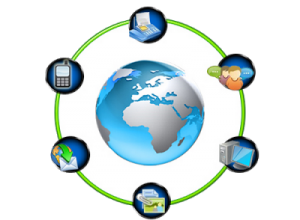You may think of a “call center” as being a massive room full of agents, but in fact, a call center may be very small. Call centers are often used for the following business functions: Catalog sales, Customer service, Collections, Help desks, Reservation and Telemarketing.
Call center software can greatly improve your business, even if you only have a few agents fielding customer service calls, and it can give your business a more professional interface with customers.
This article will give you the benefits of utilizing call center software, its features, and the costs that you can expect. There is also a cost breakdown that shows you how to save money on your call center software.
The benefits fall into five basic categories: improved customer service, decreased customer wait times, lower employment costs, increased employee productivity, and reporting for analyzing call center performance.
1. Improved Customer Service
By giving your company a uniform way to handle calls, customers know that when they call, their calls will be handled professionally and are less likely to be dropped. Without call center software, informal customer service procedures can lead to customers being placed on hold and forgotten, or customer calls going unanswered.
2. Decreased Customer Wait Times
Using the right software can automatically route calls to available agents so that customer wait time is minimized. If you include a menu system, customer input helps calls go to the right person for the call, reducing call transfers and cutting down on the time the customer spends on the phone. Simple call routing features prevent some agents having a call backlog while other agents have no calls.
3. Lower Employment Costs
Using good software allocates call agent time optimally, cutting down on the need for extra staffing and overtime. This distributes calls optimally and lets you plan call center staffing more accurately. The savings on overtime in one year can be significant.
4. Higher Employee Productivity
Features like predictive dialing keep call center agents from having to dial calls and deal with unanswered lines and answering machines. Those with predictive dialing dials pre-programmed numbers, and when someone answers, the software routes the call to an available agent automatically. This keeps call agents productive and relieves them of the tedious and mistake-prone task of manual dialing.
5. Reporting for Analysis of Call Center Performance
This software today offers powerful reporting capabilities on any number of metrics, including time spent per call or per agent, number of calls answered, and times of day when calls are heaviest. With reporting features, you can easily analyze your call center’s performance and make adjustments as necessary. For example, you may find that you need more agents during certain hours or on certain days of the week, and you can schedule shifts accordingly.



